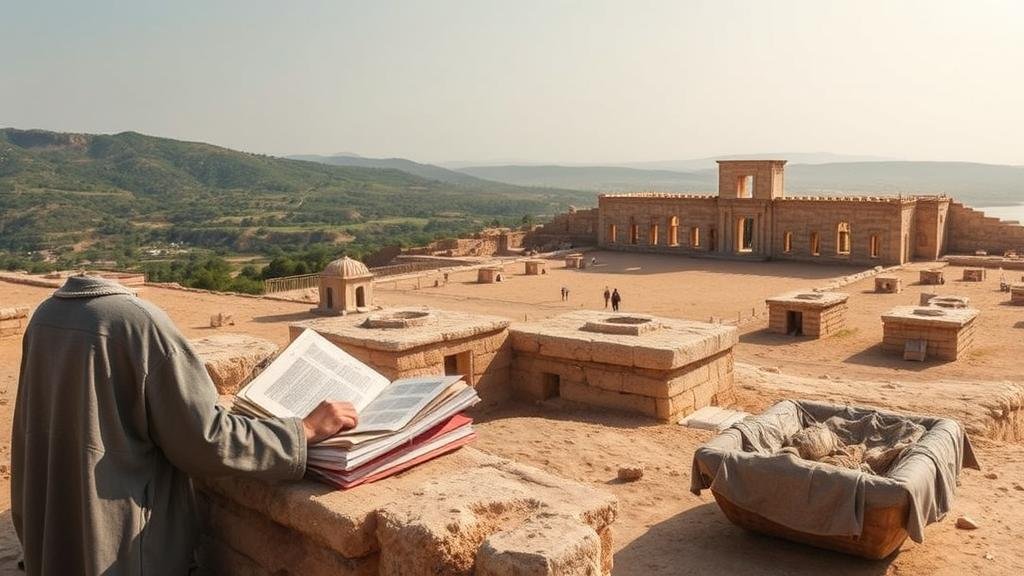The art of storytelling in making archeological discoveries accessible to the public.
The Art of Storytelling in Making Archaeological Discoveries Accessible to the Public
The field of archaeology is rich with narratives that have the power to bridge gaps between ancient histories and modern audiences. But, without effective storytelling, the significance of archaeological findings can be lost, rendering them mere facts in dusty textbooks. The art of storytelling plays a crucial role in making these discoveries not only accessible but also engaging to the public. This article explores how storytelling enhances archaeological communication and presents tangible examples of its impact.
The Role of Storytelling in Archaeology
Storytelling serves as a medium through which archaeological findings can be contextualized, making it easier for people to relate to and understand the past. By transforming dry data into compelling narratives, archaeologists can capture the imagination of the public, achieving a deeper appreciation for historical contexts.
For example, consider the excavation of Pompeii, which occurred around 79 AD. Archaeologists uncovered well-preserved ruins that painted vivid pictures of daily life in a Roman city. By weaving narratives around the daily lives of its inhabitants–like the baker found in his shop or the family frozen in time–educators can tell the story of a thriving community abruptly interrupted by the eruption of Mount Vesuvius, thereby engaging the public’s interest.
Techniques for Effective Storytelling
Effective storytelling in archaeology typically includes several key techniques:
- Characterization: Creating relatable figures or characters from the past helps audiences connect emotionally to the narrative. This could involve identifying real individuals, such as the residents of a site, and elaborating on their lives.
- Setting the Scene: Describing the historical context and physical environment provides a backdrop that enhances understanding. The description of ancient cities like Machu Picchu can transport audiences into the Incan world.
- Incorporating Multimedia: Utilizing visual aids like photographs, illustrations, and films can hugely impact how stories are received. For example, digital reconstructions of ancient cities can visually immerse audiences in long-lost worlds.
Real-World Applications
Several archaeological projects illustrate the effectiveness of storytelling in engaging with the public:
- The Field Museum in Chicago: Exhibitions on the Indiana Jones films showcase artifacts while delving into their historical significance. By framing the artifacts through compelling narratives, the museum invites visitors to ponder the stories behind each object.
- The British Museum: Their online collections often include interactive timelines that tell the story of an artifacts journey from its place of origin to the museum. This keeps the audience informed about not just the artifact but also the cultural and historical milestones associated with it.
Addressing Common Concerns
One of the pressing concerns in the realm of archaeological storytelling is the potential for romanticizing the past. It is crucial to strike a balance between an engaging narrative and historical accuracy. Archaeologists are tasked with presenting the often complex and nuanced realities of past societies without resorting to hyperbole.
Also, it is vital to acknowledge diverse perspectives. For example, in storytelling about indigenous archaeological sites, engaging native communities in the narrative creation process can provide authenticity and greater cultural sensitivity.
Actionable Takeaways
To effectively implement storytelling in archaeology, consider the following steps:
- Engage with the community to discover the stories they find compelling, thereby ensuring relevance.
- Use modern digital tools for better storytelling through visualization and interactivity.
- Maintain a commitment to ethical storytelling practices that respect cultural heritage while educating the public.
To wrap up, the art of storytelling is not merely an accessory to archaeological inquiry; it is a fundamental component that enriches public engagement and understanding. By framing discoveries within inviting narratives, the field of archaeology can continue to inspire and educate, making their fascinating findings accessible to all.



